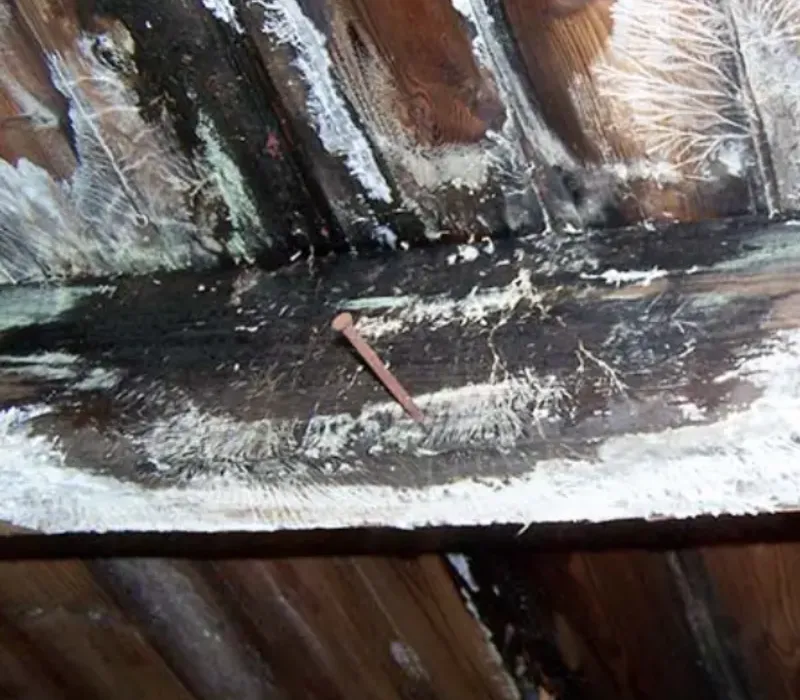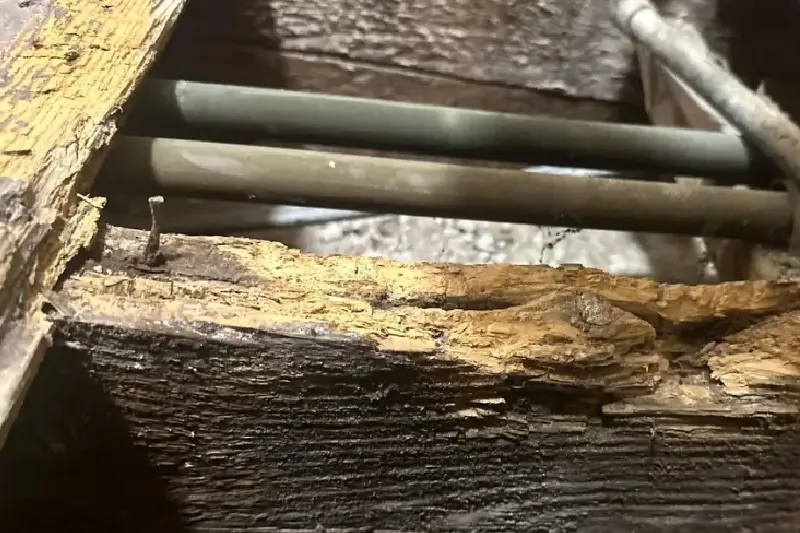Do you have Wet Rot damaging the joists, floor boards and timbers in your home/property in the North East of England?
Wet Rot is a form of fungal decay that affects timber exposed to excessive moisture. It occurs when the wood’s moisture content exceeds 30%, making it a common issue in damp environments. Unlike Dry Rot, which can spread through masonry, Wet Rot remains localised to areas with high moisture levels, making it less destructive but still a serious concern.
Wet Rot commonly affects timber in contact with damp walls, such as joist ends, floorboards, and skirting boards. It is frequently found in properties with rising damp or poor ventilation.
Wet Rot can be caused by various fungal strains, with Coniophora puteana (cellar fungus) being the most common. Other strains include Fibroporia vaillantii and Phellinus contiguous. Wet Rot falls into two main categories—white rot and brown rot—which describe the different ways the fungi break down timber.

Detecting Wet Rot early can save you significant time and money. Look out for these tell-tale signs:
Regular inspections of your property can help to identify the early stages of Wet Rot where it can be dealt with more easily.

The key to addressing Wet Rot is identifying and eliminating the source of excess moisture. Whether caused by rising damp, leaks, or poor drainage, resolving the underlying issue is crucial before treatment. Once the moisture problem is fixed, affected timbers are either treated or replaced to prevent further deterioration.
Here is a general outline of the Wet Rot treatment process:
Fix any leaks, improve ventilation, and reduce humidity.
Carefully remove all decayed joists, floor boards and timbers to prevent the fungus from spreading.
Apply a fungicidal treatment to adjacent wood and masonry to kill any remaining spores.
Use new, treated joists, floor boards and timbers to restore structural integrity ensuring any cut ends/areas are treated before fixing into place.
Ensure the area is well-ventilated to prevent build-up of humidity which can cause elevated moisture levels in timbers leading to a re-occurence of Wet Rot. Ventilating of sub floor voids with additional airbricks may be required.
Each Tyne Tees Wet Rot treatment is unique, and the expenses associated with it depends on factors such as the area of the size affected and the costs of necessary materials and products to replace damaged joists, floor boards and timbers.
For an accurate assessment of the costs associated with your specific Wet Rot project, contact us to book a Tyne Tees Wet Rot inspection.
We can then schedule a Tyne Tees Wet Rot timber survey conducted by one of our specialist surveyors to provide you everything you need fix your Wet Rot and turn your property into Wet Rot free and homely environment.
Arrange an inspection of your property to identify and treat your Wet Rot attacks.
Our professional Tyne Tees Wet Rot & Timber Surveyors will provide a detailed report of what they find and how to solve any issues.

We are Tyne Tees Wet Rot Specialists covering all areas of the North East of England, Newcastle, Tyne & Wear, Northumberland, Durham, Sunderland and beyond.
If you do, please visit our main website: Tyne Tees Damp Proofing for more details.